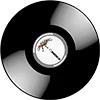
The history and features of Acid Jazz: how jazz met funk and electronic music. Key artists, facts, and the genre’s influence.
Acid Jazz is a musical genre that emerged in the late 1980s, blending jazz improvisations, funk grooves, elements of soul, and hip-hop. It’s a style that fits equally well on the club floor and in a cozy lounge atmosphere.
History
-
Late 1980s, London: the term acid jazz was first used by DJs and producers in the UK. It became a natural continuation of acid house and jazz-funk.
-
The genre’s founders are considered to be Gilles Peterson and the label Acid Jazz Records.
-
By the 1990s, Acid Jazz had gained worldwide popularity, with its sound heard in clubs from New York to Tokyo and Paris.
Characteristics
-
Funky rhythms and “live” basslines.
-
Jazz improvisations featuring saxophones, trumpets, and keyboards.
-
A mix of electronic elements and hip-hop beats.
-
A relaxed, groovy atmosphere that easily transitions from the dance floor to lounge settings.
Notable Artists
-
Jamiroquai – the genre’s leading hitmaker, known for global hits like Virtual Insanity.
-
Incognito – a legendary British band blending jazz and soul.
-
Brand New Heavies – a mix of funk, soul, and jazz.
-
US3 – known for their hit Cantaloop (Flip Fantasia).
-
Corduroy, Galliano, Mother Earth.
Influence
-
Acid Jazz influenced the development of nu-jazz and future jazz.
-
Many modern lounge tracks have their roots in acid jazz concepts.
-
Soundtrack composers (in advertising and film) often use this style to create a light yet stylish atmosphere.
Interesting Facts
-
Japan still maintains a strong Acid Jazz scene with a distinctive sound.
-
Jamiroquai became the first artist in the genre to achieve global success, selling millions of albums worldwide.
-
Acid Jazz is often performed by live bands, not just electronic producers.

